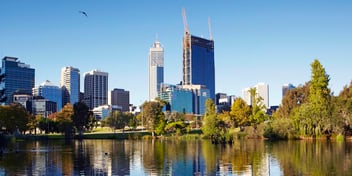Water Corporation taking innovative approach to wastewater
Western Australia (WA) may be known as the mining capital of the country, but a different resources boom is taking shape – renewable resources manufactured from treated wastewater.
The state, and Perth in particular, is already leading the way in recycled water. In fact, almost half of Perth’s water supply comes from seawater desalination and groundwater replenishment.
WA Water Minister Dave Kelly said it’s now time to focus on developing smarter technologies for the treatment of wastewater.
“WA is already an innovator in this space. We are the first state in Australia to use treated wastewater to recharge groundwater aquifers for future drinking water needs,” Kelly said.
“Making the most of our treated wastewater through recycling is vitally important as we continue to feel the impact of climate change.”
To this end, state-owned Water Corporation has launched a new Innovation Hub on the grounds of its Subiaco wastewater treatment plant (WWTP).
The hub is part of the larger Water Research and Innovation Precinct, which came out of Water Corporation’s plan to create ‘Buffertopia’. First developed in 2003, the idea of Buffertopia is to use the buffer zone around WWTPs in a way that benefits the community. For example, creating an oval or public park near the plant that is irrigated using recycled wastewater.
Wastewater revolution
Vincent said Water Corporation will work with researchers, technology partners and industry at the innovation hub to develop smart solutions that help achieve Water Corporation’s sustainability goals.
These include: reducing greenhouse gas emissions; minimising the use of chemicals; increasing the recovery of wastewater flows; reducing the physical footprint of WWTPs by using more compact technologies; and reducing whole-of-life costs for WWTPs.
The idea is to pilot new technologies that use wastewater outputs (such as recycled water, nutrients, sludge and biogas) or provide inputs (such as energy).
“Water Corporation developed the hub to facilitate collaboration with partners on the latest technologies that enable resource recovery and wastewater recycling, allowing them to be proved so that they can implemented with confidence as part of future upgrades,” Vincent said.
“Through the hub, Water Corporation will look to demonstrate evolutionary and revolutionary technology to deliver its sustainability and efficiency outcomes.”
While evolutionary technology includes solutions that are reasonably well-established and have been used elsewhere, Vincent said revolutionary technology is about exploring the unknown.
“It will need to be well researched and resourced, with the objective goal of contributing to significant improvements in Water Corporation’s sustainability goals,” he said.
The utility is currently looking for a global tech partner to take up long-term residence in the innovation precinct to trial the new treatment technologies.
“[This will] bring new knowledge and capability to Water Corporation and ensure WA is always at the cutting-edge of delivering improved efficiency and sustainability,” Vincent said.
“Innovation is vital to the water industry, so it can continue to make the most of new technologies to ensure operations – be it water, wastewater or drainage – occur in the most sustainable way possible.”
To put forward a proposal for the Innovation Hub, click here.

